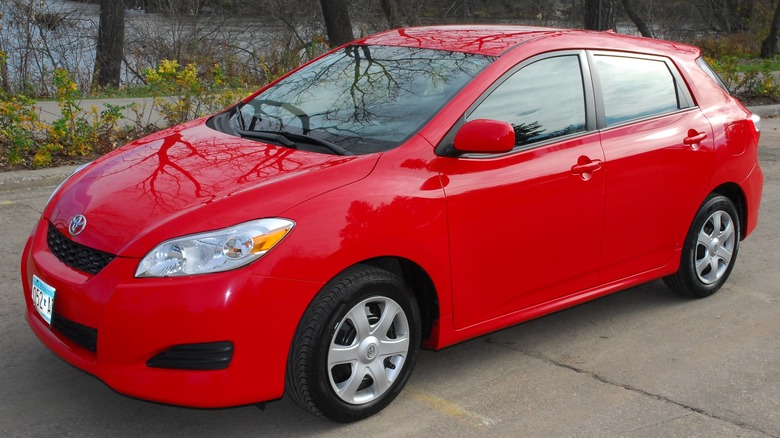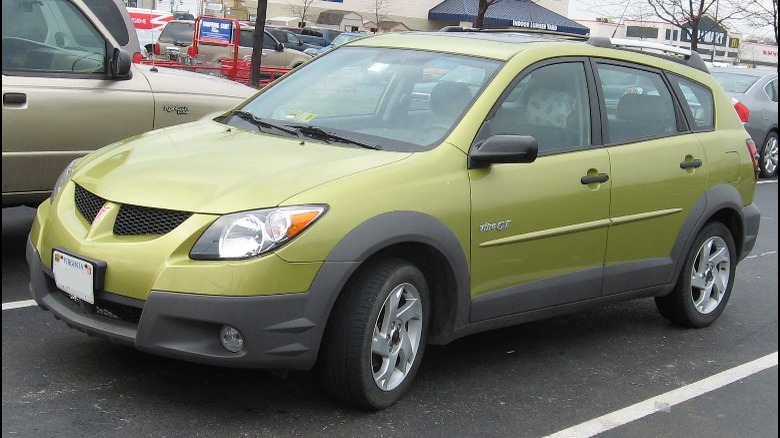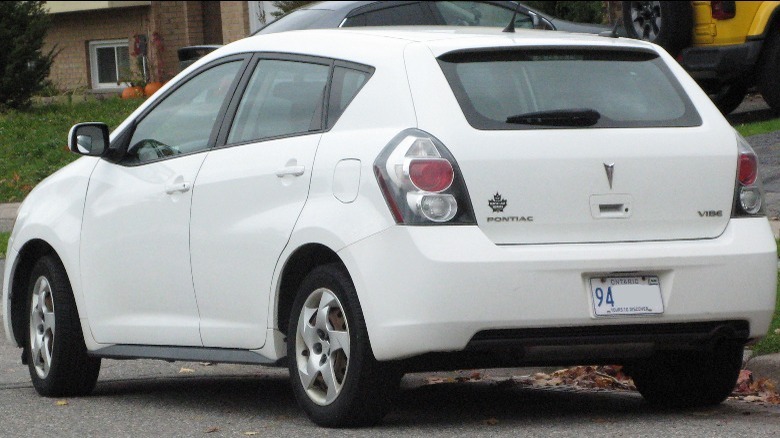Is Pontiac Vibe The Same Car As The Toyota Matrix?
Car makers, like any manufacturer, want their products to be distinctive and follow their brands. It helps build customer loyalty to a level other industries can only dream about. Despite their competitive sales tactics, however, auto manufacturers do work cooperatively from time to time.
One example is the joint partnership between General Motors and Toyota that created the New United Motor Manufacturing Inc. plant in Fremont, CA in 1986. This partnership resulted in a sport wagon or crossover utility vehicle for each brand for the model year 2003. Pontiac unveiled its Vibe, assembled in the Fremont factory, and Toyota introduced the Matrix, which was assembled in Ontario, Canada. The cars were sporty, practical, fuel-efficient, and initially well-received.
It was also no coincidence that they had so much in common. They were essentially the same vehicle underneath the body panels, running on the same Toyota engine and transmission and a Corolla platform. They were both four-door, front-wheel-drive wagons with optional AWD and offered a 1.8 liter, 4-cylinder engine in their first year of production.
[Featured image by Chris via Wikimedia Commons|Cropped and scaled| CC-BY-SA-2.0]
The Vibe and the Matrix offered utility and affordability
In its first year, the four-door Pontiac Vibe came in two trims with manual transmissions – a front-wheel-drive base model or GT. The base model offered AWD with an automatic transmission as an option. The 1.8 liter inline four-cylinder engine served up 130 hp, while the GT's 1.8 produced 180, giving this small wagon some hustle. It offered more standard safety features than the Matrix, including emergency interior seatback release, dusk sensing headlamps, and front fog running lights, as well as one more exterior paint color for a starting MSRP of $16,485.
By 2009, Pontiac had introduced a new 132 hp Toyota engine for the Vibe — still a 1.8 liter inline four, but this one was a ZR engine for all trims but the GT. The GT scored a Toyota AZ 2.4L four-cylinder that delivered 158 hp until the Vibe was discontinued in 2010.
The Toyota Matrix model also sat five passengers and was similarly focused on a flexible and functional interior layout. It had foldable seats, which created a surprisingly roomy cargo space of 53.2 cubic feet. The Matrix offered more trims than the Vibe in its first year — standard, XR, and XRS. All trims came in manual or automatic transmissions, and only the XRS didn't offer AWD as an option. A 1.8 liter inline four-cylinder engine powered all the trims, with the standard and XR getting 130 hp; the XRS added a little more horsepower to reach 180 hp.
[Featured image by IFCAR via Wikimedia Commons|Cropped and scaled|Public Domain]
How to spot the differences in the wild
The most obvious differences between these two siblings show up on the exteriors of the vehicles. The Vibe, of course, featured the iconic Pontiac nostrils on the grill and had fog lights low on the front. It also had a third window on each side, in front of the rear pillar. The GT offered the contrasting-color cladding that made the Aztec so ridiculed.
The Toyota Matrix's nose featured a more uninterrupted panel area, making it look more suburban than crossover. It had windows on either side of the tailgate's main rear window, and taillights that wrapped further around the vehicle's sides. In 2003, its base model MSRP started at $14,670.
While GM struggled financially in 2009 and ended the Vibe's run in 2010, the Matrix wasn't discontinued until 2014. By that time, the competition among crossovers and SUVs had heated up, and Toyota had moved on to new models.
[Featured image by SsmIntrigue via Wikimedia Commons|Cropped and scaled| CC-BY-SA-4.0]


